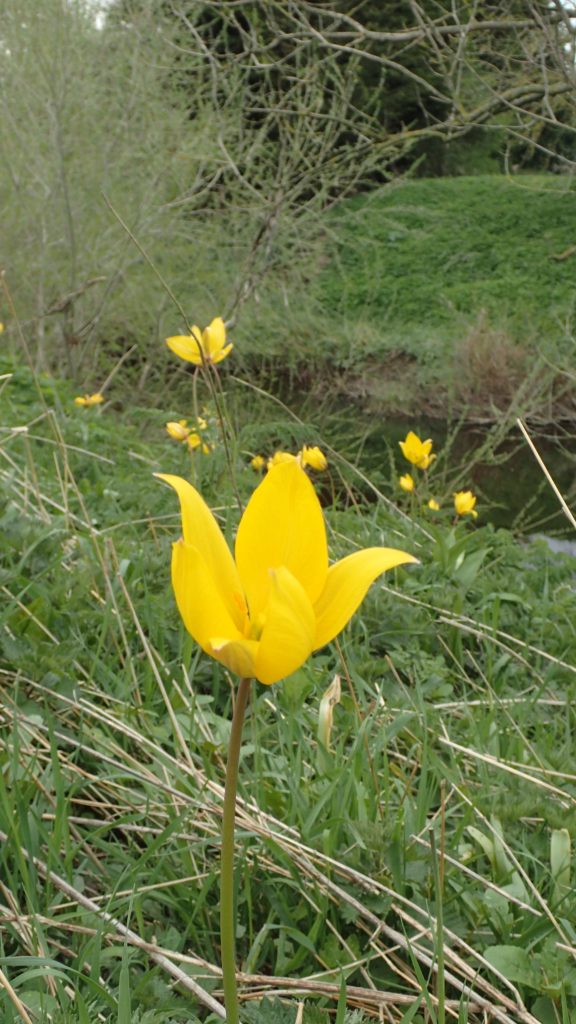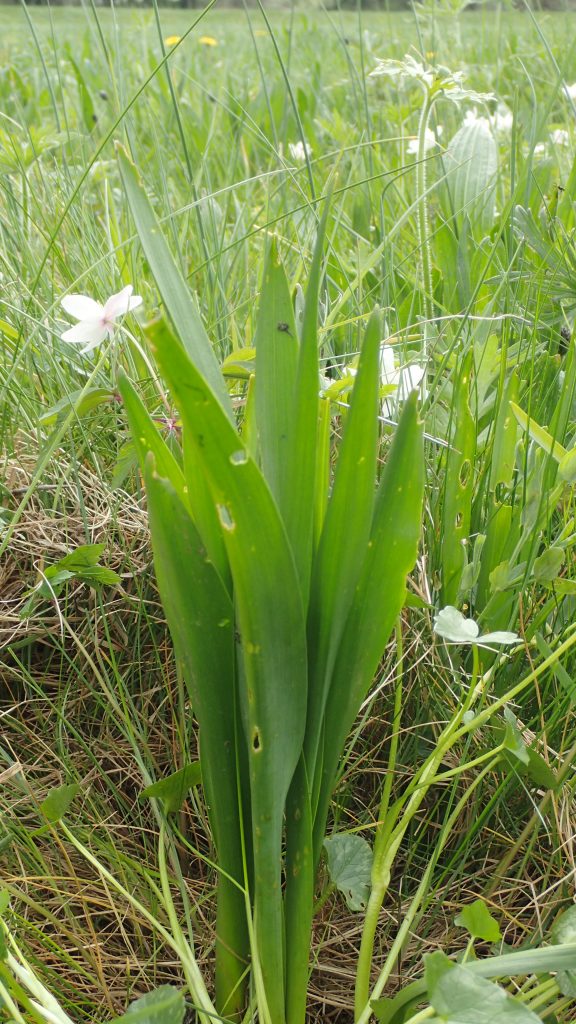13 members attended
Aubert Ings is a fascinating example of a rare habitat; ancient flood meadow. Because of the wet ground it has never been ploughed, though was originally woodland which was cleared hundreds of years ago and traditionally managed ever since. This is evident from the species list (see separate document) which reflects the woodland origins. There is a man-made bank around the site but flooding takes place from the underlying aquifer often to some depth during the winter as evident from the residual debris at the field margins.
Management is by sheep for a short time after spring flowering, followed by a hay cut early July and then brief aftermath sheep grazing.
The site is famous for wild tulips, Tulipa sylvestris (though probably garden escapes from the 1870s) which are bright yellow but less showy than those currently desired by horticulturalists), meadow saffron, Colchicum autumnale (which flowers in September though the leaves are evident now and the ovaries will be developing) and fritillaries, Fritillaia meleagris (probably garden escapes from the beginning of this century).
Less desirable introductions included giant hog weed (Heracleum mantegazzianum) near the River NIdd and Himalayan balsam (Impatiens glandulifera) on the periphery.
Another species of interest was butterbur, Petasites hybridus which is dioecious (male and female flowers on separate plants). The male butterbur is nationally much more common with its condensed flowers closely organised on the stem. However, at Aubert Ings it is the female that is common, its flowers taller and spread out on the stem. The species is spread by root fragments which may explain the distribution. Pepper saxifrage (Silaum silaus), downy oat grass (Avenula pubescens), bulbous buttercup, Ranunculus bulbosus (with characteristic swollen base and thick leaves), mugwort (Artemisia vulgaris), rough and autumn hawkbit, Leontodon hispidus and Scorzoneroides autumnalis respectively and tansy (Tanacetum vulgare) were also found.
Thanks to Muff Upsall for organising the trip and to Kevin Walker for the fascinating site and plant details.
Hazel Mitford



